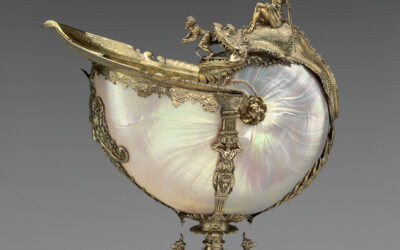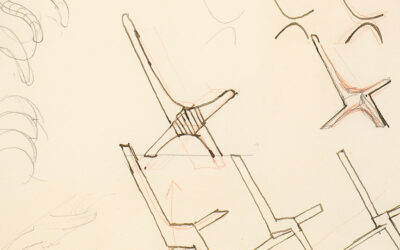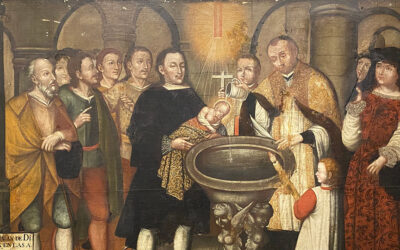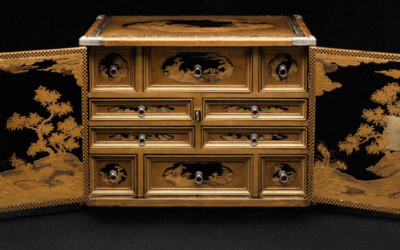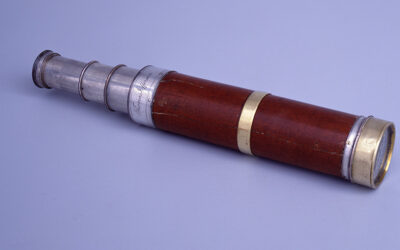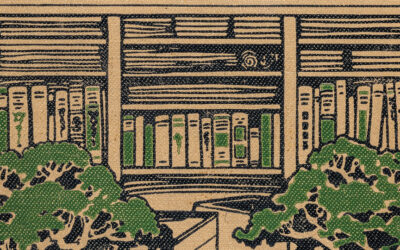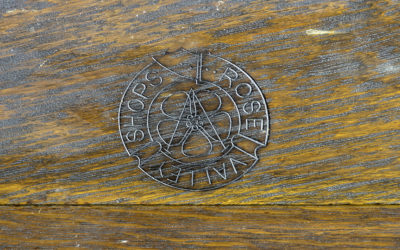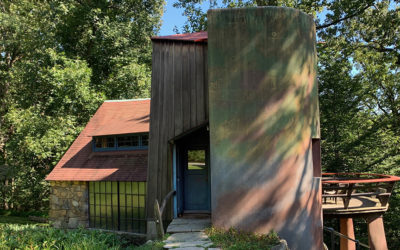NEW RESEARCH
In addition to the Decorative Arts Trust’s support of scholarship through the Emerging Scholars Program, we eagerly promote the research, exhibitions, and projects undertaken by colleagues at museums around the country in our member magazine, The Magazine of the Decorative Arts Trust. We invite you to enjoy the online versions of magazine articles featured below.
See more stories about recent research in The Decorative Arts Trust Bulletin.
Manipulating Mother-of-Pearl: An 18th Century Coque de Perle Bracelet
BY CYNTHIA KOK
The popularity of coque de perle hints at mother-of-pearl’s transition from a valued rarity to a semi-precious, but abundant, resource with which makers experimented.
Tracing a Friendship Through Design: Clara Porset and Josef Albers
BY CHRISTINA DE LEON
The Cuban-born designer Clara Porset settled in Mexico City as a political exile in 1936 at the age of 41 and would become one of the country’s leading designers.
Interrogating Fashion Through Religious Painting in Colonial Spanish America
BY LAURA BELTRAN-RUBIO
I studied dresses portrayed in a c. 1750 scene of the baptism of Saint John, attributed to the famed portrait painter Joaquín Gutiérrez of Nueva Granada, as part of my doctoral research,
Teaching Needlework: Quaker Mother-Daughter Duo Elizabeth and Ann Marsh
BY ISABELLA ROSNER
Elizabeth and Ann Marsh taught the daughters of elite Quaker and non-Quaker Philadelphia families, establishing a needlework aesthetic popular throughout the Delaware Valley for more than a century.
Chinese Porcelain and Japanese Lacquerware in the Cabinets of Amalia van Solms-Braunfels
BY LAURYN SMITH
In the 1600s, wealthy and elite individuals began amassing extraordinary collections, composed of both locally produced and imported works of art. Few were as innovative as Amalia van Solms-Braunfels, Princess of Orange.
Optics and Enslavement in Charles Willson Peale’s Benjamin and Eleanor Laming
BY MICHAEL W. HARTMAN
A 1789 Maryland inventory recorded seven enslaved people—Beck and her children Juliet, Biddy, and Henry; Mary and her daughter Appolonia; and a man called Dick—as the property of Benjamin and Eleanor Laming, the subjects of a double portrait by Charles Willson Peale.
Nancy McClelland: Illuminating the Scope of Her Work Through the Lens of Electra Havemeyer Webb
BY MARGARET WOOD
Best known as an interior decorator and wallpaper historian, Nancy Vincent McClelland’s passion for wallpaper spanned decades. Throughout her nearly 60-year career, she studied, collected, produced, and used wallpapers in her practice.
Louise Brigham’s Box Furniture and the Long History of Democratic Design and Creative Reuse
BY JENA GILBERT-MERRILL
In 1909, a little-known artist and social reformer named Louise Brigham published Box Furniture: How to Make a Hundred Useful Articles for the Home, a collection of instructions for producing simple, modular furniture from repurposed wooden packing crates.
The Arts & Crafts Experiment of Rose Valley
BY SUE A. KEILBAUGH
In 1901, William Lightfoot Price brought together a group of prosperous Philadelphia free thinkers who enjoyed debating current philosophies of reform with the more informal company of his partners, friends, and relatives whose interests lay primarily in aesthetic matters. The consequence was the start of Price’s experimental utopian community based on the Arts & Crafts Movement.
A Place That I Think You’ll Like
BY JULIE SIGLIN
The story begins with a magnificent cherry tree. Wharton Esherick (1887–1970), an artist often considered the father of the Studio Furniture movement, was recently married and searching for a home in which to start his family. While exploring properties for sale in the Paoli, PA, area with his realtor, the agent said, “I’ll show you a place that I think you’ll like.”

